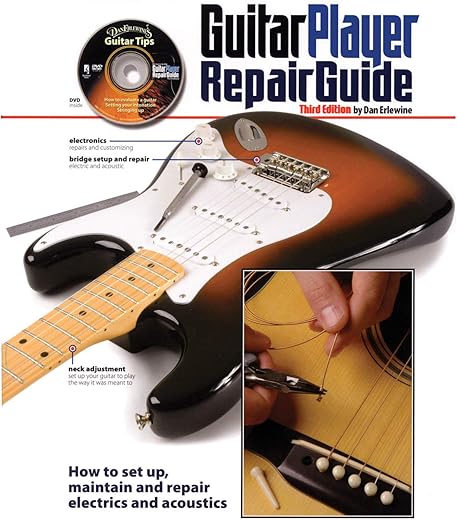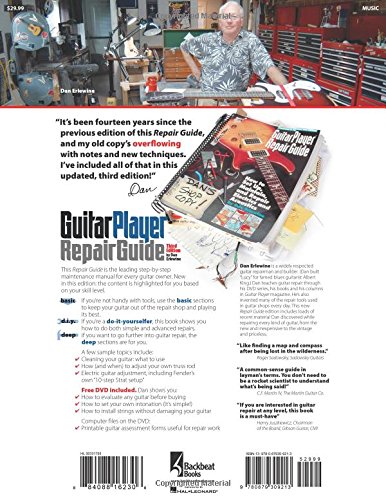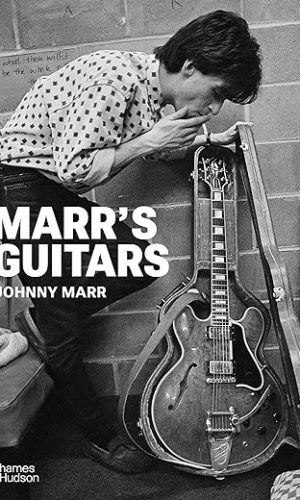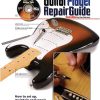The Guitar Player Repair Guide, Third Edition: How to Set Up, Maintain and Repair Electrics and Acoustics
£23.70£26.60 (-11%)
This expanded edition for beginners to experts is a step-by-step manual to maintaining and repairing electric and acoustic guitars and basses. Players learn how to set up a guitar and keep it in top form by mastering basic maintenance. Features an essential DVD that makes guitar maintenance easier than ever. New features include set-up specs of leading players; stronger coverage of guitar electronics including pickups and wiring diagrams; and expanded coverage of acoustics.
Read more
Additional information
| Publisher | Backbeat, 3Rev Ed edition (1 Dec. 2007) |
|---|---|
| Language | English |
| Paperback | 336 pages |
| ISBN-10 | 0879309210 |
| ISBN-13 | 978-0879309213 |
| Dimensions | 21.62 x 2.18 x 28.02 cm |









![Improve your sight-reading Piano Grade 1 [Improve Your Sight-reading]](https://www.paperbackbooks.co.uk/wp-content/uploads/2023/11/improve-your-sight-reading-piano-grade-1-improve-your-sight-reading-300x500.jpg)

by Broken iPod owner
I saw this book ridiculed on ‘Dave’s World of Fun Stuff’ on Youtube – but the guy on there constantly referred to it for tables on how to set up guitars
I have so many different guitars I thought buying it would give me the tables to set them up. It does, but there’s about 3 pages total of the book for the tables, and I could no doubt have got them off the internet, now I think about it
HOWEVER – this book is fantastic. Every angle of every detail of everything I could ever think of is in it, and I don’t regret buying it for an instant. I saw Erlewine speak on Youtube and I thought the text would be tedious, but it reads well
I’d read this book even if I DIDN’T have a load of guitars and a desire to set them up right. The book even tells you how to pack an amp for transportation – more tips than you can imagine
by Yngve Ellingsen
This must be the ultimate DIY guitar repair guide. I believe anyone would find what they’re looking for in this book. It covers general setup and repair applying to any model, acoustic or electric. Illustrations may be small, and only in black and white, but the important ones are sharp and detailed. I’d be hard pressed to find a problem with my Les Paul (I now have my Gibson Les Paul tuned to perfection by the aid of this book) or Strat copy that isn’t covered here. If you’re not afraid to give soldering a go, you’ll find most schematics needed for electronics repair here. Be warned, though: Some of the procedures described here are not for people with multiple thumbs on each hand. Intelligently enough, the author issues warnings about this. All procedures are marked with the appropriate level of skill needed to succeed. There’s also a DVD for the vintage buyer and would-be-repairer. It’s not a complete guide in itself, but shows a few of the procedures described in the book, mostly concerning vintage assessment and repair. If you’re only buying one guitar repair manual, this one should probably be it.
by Sarah
Very informative and educational book. Bought as a gift. Very appreciated.
by Mark
I’ve been struggling with an out of tune guitar for months now and it’s been driving me round the bend. I had decided that I needed a shop to sort out the intonation for me but on the off chance I thought to look if there was a book on the matter and I found this. I had a fairly quick thumb through and decided I could give adjusting the intonation and action a go myself, and if it didn’t work out, I could still take it to the shop.
I’m glad I did.
There is a whole world of guitar science that I never really knew existed and this covers most of it off. The book covers a whole host of topics but crucially includes measurements for some typical set ups against which you can compare your guitar. I had a quick look over my guitar, realised the neck was pretty straight and good but perhaps with a slight bow in the wrong place – no big deal and no need to adjust. But what I did find is that the string height at the nut was way off on the top three strings. It would never have crossed my mind that such a problem would exist and affect the tuning of the guitar so badly. Anyway, I adjusted this carefully and the tuning is now impeccable – I almost can’t believe it. Well worth the price of the book.
One thing to note, as other reviewers have done – all the measurements in the book are in inches, or fractions of an inch. A bit of a nightmare if you come from any country in the world outside the US, or you live in the UK and are under the age of 50. My trick was to go through the sections I needed to use with an on-line calculator working out conversion and writing the metric equivalent next to each imperial measurement in the book. Yes, this means I’ve totally defaced some pages but I can now use the book much more quickly.
by Andrew
I’ve been playing guitar for about 15 years, but for most of that time I’ve been pretty ignorant about maintenance. I could do basic things like intonation, but I had no idea what kins of a difference a good setup could do for a guitar.
Most of the guitars I’ve owned were pretty cheap, so when I’d run them into the ground I just got a new one. But my latest guitar is a Fender Strat – It cost me too much to replace at a whim! It sounded amazing for the first couple of years but seemed to sound a bit duller as time went on. I’d always kept the intonation in check but it was still loosing the sound. I looked up a few tips and tricks to see what I was doing wrong and tried a few things like changing the tremolo springs from the two it was set up with at an angle to three straight ones (I’d read that heavier gauge strings needed more springs).
Big mistake! I put the extra spring in without reading up on balancing the trem and it sounded horrible, wouldn’t keep in tune and I had put a noticeable bend in my neck. My guitar sounded horrible and even when I put the springs back to what they were it was still sounding bad and wouldn’t stay in tune.
I considered taking it to a guitar shop to get it fixed but I couldn’t believe the prices I would have been charged. I did some searching on the net for information and books on guitar setup and repairs and this book and the authors name kept cropping up. So I bought the book and some feeler gauges
Draper 10094 18-Blade Metric/Imperial Feeler Gauge Set
– you’ll need these for the really small measurements when you’re adjusting the truss rod) and in one weekend I’ve completely sorted my guitar out. I’ve even adjusted the truss rod to straighten the neck (leaving only Fenders recommended amount of relief to eliminate fret buzz)
Apart from the feeler gauges, the only tools you’ll need for a good setup are some screwdrivers (standard and precision), a steel rule (mine had mm and inches which you will need), some allen keys (all the ones I needed came with the guitar)and some pliers (makes it easy to get the springs off when you’re setting up the trem). I also made a plastic wedge by gluing some of the slanted spacers you use for laying laminate flooring to stop it being flush to the skirting board. This slanted wedge is essential to balancing your trem.
In a few hours over the weekend I completely transformed the sound of my guitar. It’s better now than when I first had it. The strings stay in tune, the sustain is longer and I’ve eliminated all the fret buzz problems I was having.
I read up the relevant sections on the truss rod and tremolo and then followed a 10 step setup guide carefully and bingo! I noticed the guitar was sounding better as soon as I’d finished it and it was a big difference!. I checked and double checked the measurements and it was all good.
The book also caters for other guitar types (including basses and accoustics) but the electric part does seem more geared towards Gibson and Fender (but you could apply the information to any make). The book even has in depth sections on customising guitars, cleaning, restoration and electronics. All of the information is very clear and explained thoroughly without being too technical (but if you want to go further in depth as far as refretting and even building your own pickups).
If like me you’re from the UK then be prepared to start reading measurements in inches and parts of an inch (If you download a spec sheet for your guitar you’ll find all the measurements for string height etc in fractions of an inch anyway).
I learnt more from reading this book than I’ve ever picked up from discussions with other guitar players and guitar magazines.
Sorry about the long boring review, but this is my experience from owning this book less than a week!
If you own a guitar get this book! If you have any questions about the book I’ll try to answer as many as I can.